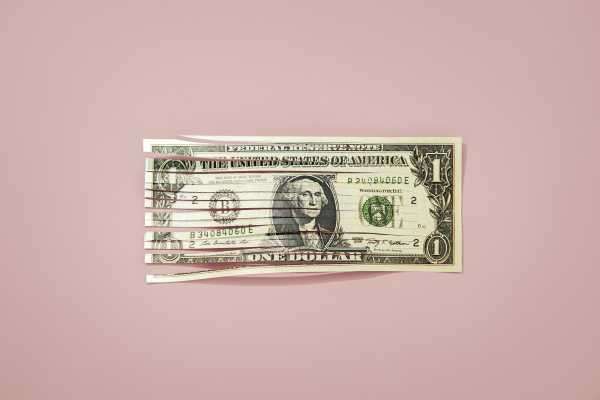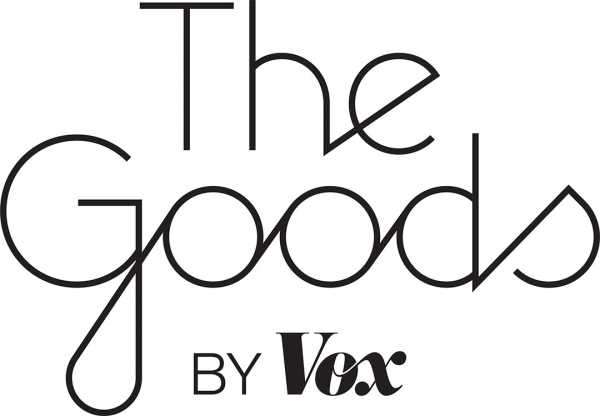
This story is part of a group of stories called

Last March, in the midst of a nationwide lockdown that left millions out of work, the residents of Wasatch Property Management’s apartment complexes were presented with a solution to the impending problem of rent. It came from a little cartoon woman named Penny featured on Wasatch’s Facebook page. Through an app called Flex, Penny explained, tenants could pay rent in installments throughout the month, rather than a lump sum at the month’s start.
“Have you ever gotten yourself in a small financial pinch or maybe even had to pay a late fee on your rent?” Penny asked. “Because let’s face it, life happens!” The cartoon went on, explaining that her payday falls on the 15th of the month, and Flex allowed her to budget rent into “small, stress-free payments.” The downside, which was left out of the video, is that tenants are charged a $20 monthly fee to use Flex. Online, some have compared the service to Afterpay, a point-of-sale lending service that provides shoppers the option to split their purchases across several payments.
These buy now, pay later providers have spent years slowly infiltrating the retail market through partnerships with merchants, but the pandemic has accelerated their popularity among online retailers, from luxury brands to independent shops to fast-fashion sites. As a result, more consumers have grown familiar with these services, many of which have buzzy two-syllable names like Affirm, Klarna, Quadpay, and Sezzle.
These startups sell the myth that shoppers are in greater control of their money, even while they’re fulfilling their consumerist desires. Customers, particularly those who are budget-conscious or financially constrained, are under the illusion that they’ve spent less and are able to hold on to their hard-earned cash for a few weeks longer. Meanwhile, for retailers, a service like Afterpay could theoretically increase the average value of a shopper’s order — encouraging them to spend money they don’t presently have to spend.
It doesn’t end with retail, though. Emerging fintech apps are looking to apply this lending model to other sectors, from health care to travel to rent. Sure, people are growing acclimated to dividing their purchases into four easy payments, even applauding the option to do so. But no matter how you frame it, the pitfalls of these plans seem to be, unfortunately, just more debt.
“Buy now, pay later” sounds simple. The fine print is more complicated.
Iyahna Symonne has been in a complicated relationship with Afterpay since February. The 21-year-old’s spending habits were “already out of line,” so when faced with a $110 purchase from the fast-fashion retailer Shein, selecting the buy now, pay later option felt like a no-brainer. Since then, Afterpay has doubled her credit line from $600 to $1,200, extending her the possibility to buy more — and to be stuck in a cycle of repayments.
As of late, Symonne’s impulse has been to split payments for most of her clothing purchases, even with less expensive items like a $30 PacSun jacket. “If [a store] offers Afterpay, I’m going to use it. I don’t care if it’s $5,” she told me. “It makes me feel like I’m saving more money.” She is aware that isn’t true; in fact, Symonne is at risk of paying a small fee if she misses a payment.
The trade-off with Afterpay is that she feels less guilty about shopping, even if it’s just a sticky reframing of expenses. If spending $100 is a splurge, then an upfront cost of $25 seems much more manageable, especially if no interest fees are involved, unlike with credit cards. Most providers offer no-interest payment plans if the buyer pays off the product within four installments or a fixed period. But the fine print varies, as does the amount for late fees.
Jason Mikula, who writes the newsletter Fintech Business Weekly, separates these services into two distinct categories: point-of-sale lenders (Affirm, PayPal Credit), which usually apply to larger purchases like Casper mattresses or Pelotons, are repaid over longer periods, require credit checks, and charge buyers interest; and pay-in-four services (Klarna, Afterpay), which charge no interest, require a 25 percent deposit, and operate without credit checks or reporting to credit bureaus. The rent service Flex markets itself as an opportunity to build tenants’ credit scores by reporting payment behavior to credit agencies, which means late payments can affect a person’s score.
According to Mikula, who has spent more than a decade working in consumer credit, the first option generally appeals to high-income shoppers, while the latter is geared toward younger or income-constrained people. “If I’m going to buy a Peloton and get 0 percent financing, why would I not take that? It’s essentially free money,” he said. “On the other hand, the split-pay option lowers the friction of making a purchase. It is debt, and it might not legally be a loan, but it’s money the consumer owes someone.”
In a 2019 piece for Vox, reporter Susie Cagle likened Afterpay to an inversion of layaway, a payment business model marketed primarily toward cash-strapped consumers. With layaway, shoppers could place a deposit on a big purchase and pay for the item in installments before taking it home. Twitter users joke that the buy now, pay later startups are a modern-day layaway “rebrand” or a gentrification of the concept.
Cagle’s reporting reveals how providers like Afterpay are essentially short-term lending services; because they operate outside the legal definition of a loan product, they aren’t subjected to certain US consumer finance regulations, such as the Truth in Lending Act. (Afterpay co-founder and co-CEO Nick Molnar insisted to Cagle that the company functions as a budgeting tool, rather than a loan servicer.) Australian and European lawmakers have since taken steps to better regulate providers like Afterpay, but the regulatory optics in the US have been slow to change.
Despite concern from consumer advocates, many shoppers find the option to split payments useful, and some have developed brand affinity toward certain providers. Klarna and Afterpay, for example, frequently receive shoutouts from semi-viral TikTok videos of users glorifying the services, and have partnered with influencers and retailers to broadcast products and deals. As brands, these companies have adopted the tone of a friendly beneficiary: Customer service agents refer to user relationships as “friendships,” respond to comments with a suite of emojis, and assert the company’s mission of helping people buy what they love.
Like Symonne, some consumers recognize how these services enable them to buy more, rather than spend less overall. The effort to stanch this behavior, though, remains largely individualized. “[A]fterpay & klarna have me in a damn chokehold,” one user tweeted. “Somebody cancel my Klarna,” wrote another. “I’m gonna be making four small easy payments forever.”
These tweets are, like most things on Twitter, probably made in jest, but they hint at worthwhile concerns held by consumer advocates: What’s helpful for one shopper could be predatory for another, so what regulations are in place to protect people as these services bleed into other sectors, like health care? “We need a standardized way to inform people about the features of these products,” said Chuck Bell, programs director at Consumer Reports. “Most consumers aren’t aware of the distinctions between Affirm or Afterpay, and whether they’re building credit when they make an on-time payment.”
The prevailing concern is that consumers are being urged to take on more than they can afford. Some services operate without a credit check, or standardized mechanisms in place to limit overspending. But as the Atlantic’s Amanda Mull pointed out, “buy now, pay later” services shouldn’t be vilified any more than credit cards, auto loans, or any financial product designed to encourage people to buy things they can’t afford. After all, consumerism is designed to keep churning the gears of American capitalism. And since the postwar era, the evolution of consumer credit has sought to achieve one goal: encouraging people to spend beyond their means.
The evolution of buy now, pay later
The modern consumer credit system was established by General Motors to sell cars. Very few people could pay full price for one, hence the creation of a loan financing model. Today, selecting buy now, pay later is a nearly instantaneous decision, and its proliferation within retail is in line with the decentralization of fintech and the direct-to-consumer boom, according to Larry Diamond, CEO of Quadpay’s parent company Zip. With Shopify, Stripe, and the growth of e-commerce, technology developments allowed merchants to bypass the traditional, lengthy credit card integration process. “The ability to plug and play is really powerful,” Diamond said. “A merchant can decide to offer an installment solution at checkout, and once they pass the brief accreditation period, it’ll immediately appear on their checkout screens.”
Due to their novelty, these venture-backed startups are able to skirt strict regulation, although US consumer protection laws still generally apply. Among investors, Afterpay and its ilk have been touted as the future of consumer credit. Younger Americans are supposedly less trustful of traditional financial institutions and, up until 2019, were less likely to open a credit card, compared to older consumers. But recent surveys suggest more than half of millennials and members of Generation Z have at least one credit card.
Providers like Afterpay position themselves as an alternative for the young and credit-averse. Users can link debit cards or bank accounts to the service, in addition to most credit cards (Capital One has banned such transactions on its cards). Regardless, these tools all rely on the concept of spending beyond one’s immediate means. And there’s plenty of market potential for growth, in retail and other sectors. A Bank of America report predicted that the global buy now, pay later space could annually process between $650 billion and $1 trillion by 2025, which is roughly 10 to 15 times the current market. PayPal launched a Pay in 4 option last fall, and banks and credit card companies are also eyeing the space.
“Existing credit card companies, like American Express and Chase, are trying to offer customers the ability to convert purchases on their cards into installment loans after the fact,” Mikula, of Fintech Business Weekly, told me. “But uptake on those services has been very low because it’s essentially extra work.”
However, Mikula thinks that the popularity of buy now, pay later services is currently overestimated, even as they partner with more merchants and digital payment companies. He cited a 2020 survey of about 3,000 consumers from Cornerstone Advisors, which found that only 7 percent of respondents sought to split their payments. Another problem is brand loyalty, and whether providers are able to distinguish themselves in a competitive landscape.
“Most users interact with these products as a convenience option when they’re checking out online,” he said. “There isn’t an infinite pool of people who would want to split an $80 Adidas purchase four ways. It’s clear that these companies are cognizant of the risk and are trying to develop product extensions to diversify or mitigate.”
“There isn’t an infinite pool of people who would want to split an $80 Adidas purchase four ways”
Affirm and AfterPay have launched debit cards with a built-in function to split payments at in-store retailers. But while buy now, pay later is most visible in the retail space, companies are considering an expansion into sectors where consumers frequently make big-ticket purchases, such as travel, home improvement, and even health care.
“Our goal is to be the first payment choice everywhere,” Diamond, of Quadpay, told me. “The use case can extend to all sorts of purchases. If you look at Australia, we do a huge amount through bills: mobile phone bill, utility bill, medical bills.” He added that health care is “a big focus” in the United States, since a lot of people don’t have private health insurance and out-of-pocket costs can be expensive.
The startup Walnut, for example, follows a similar point-of-sale lending model that breaks down patient payments with zero interest. TechCrunch reported that the startup uses an “extensive underwriting model,” rather than a credit score, to figure out if a patient should qualify for a loan, and analyzes financial data points from a person’s spending habits to their side income. In March, Openpay became the first buy now, pay later startup to be offered in Australian hospitals, in partnership with St. John of God Health Care, the country’s largest Catholic health provider. The installment plan is specifically made for uninsured Australians without private health insurance, who might be faced with major costs for procedures like elective surgeries.
Criticism toward these fintech developments is generally directed at their novelty and lack of regulation. Such products have, to put it bluntly, disrupted the traditional pathways of taking on debt by existing beyond the purview of traditional financial institutions. Some do serve a need by extending access to credit for underbanked people, who also happen to be the most financially vulnerable. For example, a patient in need of a health care loan could theoretically rely on Walnut as a no-interest lending service, rather than take out a payday or high interest rate loan.
The unregulated gray area of this space, however, is concerning to Bell, the consumer advocate. While he didn’t mention any startup by name, he acknowledged that split-payment providers could complicate consumer relationships with retailers and merchants. “It might be difficult for consumers to work out disputes with retailers and sellers,” he said. “If a consumer gets into a travel dispute with a point-of-sale loan, they might have less leverage. It’s also confusing, because you’ve now invited a third company into the relationship that should be between you and American Airlines, or with Expedia.”
These services are marketing themselves as a stopgap to big problems that Americans face, like medical debt and the inability to build credit off of monthly rent payments. Still, they’re Band-Aid solutions to larger systemic problems that existing policy has yet to solve. It’s challenging to neutrally assess the use case of apps like Flex, Walnut, or Afterpay, as it ultimately leads one to consider philosophical arguments about the function of debt and credit in America.
“Debt has always played an important role in Americans’ lives — not merely as a means of instant gratification but also as a strategy for survival and a tool for economic advance,” argued the historian Jackson Lears in a 2006 New York Times Magazine piece. The country has never lived within its means. Being able to pay off debt has been made more valuable than avoiding it; it’s a kind of financial hazing that every American consumer must weather to ensure good credit.
Increasingly, the country’s taxing relationship with debt has come to the fore, spurred by conversations about student debt forgiveness. As shocking as our national debt figures are ($1.7 trillion in student loans), forgiveness has been, for the most part, written off as too politically radical. This failure to forgive — by the federal government and a subset of Americans — betrays a general perception of debt as an individualized failure. Whether it’s consumer, student, or mortgage debt, the act of owing money has been positioned as a conscious and individual choice, rather than the inevitable result of complex social and economic forces.
The 2008 financial crisis briefly soured consumers’ perception of debt and credit cards. Yet, in the wake of a pandemic-induced recession, credit cards and split-payment services continue to thrive. It’s impossible to entirely avoid credit (and therefore debt) as an American consumer, especially when financial products are crafted to serve the same function: ease people into buying more under the guise of convenience or flexibility.
Social media and Amazon have coaxed shoppers into a state of frequent, mindless consumption. With tools like buy now, pay later, the act of buying can be divorced from one’s bank account balance. As Mull writes in the Atlantic, a service like Afterpay “removes the psychological friction that can force people to stop, consider their choices, and decide whether they can really afford to buy that one fabulous thing.”
What happens, though, when the option to break down payments is applied to rent or a new kidney, rather than a coat or a vacation? In those instances, there is no option but to pay up. The difference is how.
Will you support Vox’s explanatory journalism?
Millions turn to Vox to understand what’s happening in the news. Our mission has never been more vital than it is in this moment: to empower through understanding. Financial contributions from our readers are a critical part of supporting our resource-intensive work and help us keep our journalism free for all. Please consider making a contribution to Vox today from as little as $3.
Sourse: vox.com





